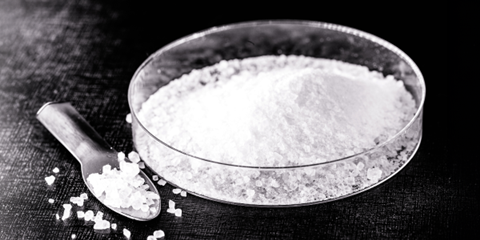Educating consumers on the health benefits of reduced sodium intake while delivering on flavour expectations is paramount in shaping future culinary landscapes. MicroSalt Inc traces the journey that has led to this point and discusses why it is so important.
The connection between nutrition and the human body has undergone significant evolution throughout history. Awareness regarding the relationship between salt consumption and hypertension traces back many centuries, with early mentions found in texts like the Huang Ti Nei Ching Su Wen (≈2600 BC), as well as references in Ancient Greece and Ancient Egypt.
However, it wasn’t until 1905 that French medical students Ambard and Beaujard demonstrated a causal link between salt intake and hypertension. Subsequently, landmark studies such as the Framingham Heart Study, initiated in 1948, played a pivotal role in recognising hypertension as a major risk factor for heart disease. Nonetheless, it was only in the late 20th century that hypertension gained widespread recognition as a significant public health concern.

Diet instead of treatment
Initially, therapeutic interventions aimed to control hypertension symptoms through medication – such as hexamethonium, hydralazine, reserpine in the 1950s, and beta blockers in the 1960s. However, with clarity emerging about the causal relationship between salt (sodium chloride) consumption and hypertension, it became evident that dietary modifications would offer a more potent solution. The initial recommendation was to reduce salt consumption, although this posed challenges due to the essential role of salt in enhancing flavour. Recognising the importance of maintaining flavour in food, various stakeholders, including medical professionals, policymakers, and the market, sought alternative approaches to mitigate the adverse effects of sodium while preserving taste.
Evolution of alternatives
Early efforts 1994-2004:
Focused on alternatives within the salt family, with potassium chloride emerging as a potential substitute. However, its bitter and metallic aftertaste limited its widespread adoption, particularly in addressing chronic hypertension. Other salts, such as magnesium chloride, presented similar challenges, with higher concentrations raising concerns about potential health impacts. Blending potassium chloride with sodium chloride and incorporating masking agents aimed to address these flavour challenges but fell short of fully replicating the taste of traditional salt.
Advancements in understanding of salty flavour and its role as potentiator (2005-2014):
Understanding salty flavour as a potentiator led to the exploration of flavour enhancers like monosodium glutamate (MSG). While initially promising, MSG’s sodium content and adverse effects led to its decline in popularity. Natural alternatives such as enzymes and yeast extracts emerged as substitutes, focusing on enhancing umami flavors without the drawbacks associated with MSG. These developments catered to various food applications, offering nuanced flavour profiles while reducing reliance on sodium.

Finding a breakthrough in salt itself (2015-2024):
The past decade witnessed endeavours to enhance salt itself, aiming to boost its flavour while reducing sodium content. Nanotechnology and encapsulation techniques emerged as promising approaches to achieve this goal, ensuring optimal flavour release while minimising sodium intake. Furthermore, data-driven methodologies, including machine learning algorithms, facilitated predictive modelling of flavour interactions, expediting the formulation process.
During this time, the advent of MicroSalt, a true low-sodium product that delivers 50% less sodium began to commercialise, stemming from research at the University of Arkansas. This breakthrough made reformulation possible to achieve a lower sodium level without impacting flavour. The enhancement of flavour is one of the key elements of salt and previous attempts to reformulate resulted in a loss of flavour and, therefore, consumer acceptance of lower sodium options. As Javier Contreras, COO at MicroSalt, says: “The key lies within the name itself; unlocking alternatives to salt requires mastery over surface area and dissolution control, essential elements for enhancing the authentic flavour of salt”. “You can’t deliver a healthier product profile without delivering a full and honest flavour experience at the same time.”
MicroSalt provides a groundbreaking solution in the realm of sodium reduction, offering a natural alternative without the use of potassium chloride. This innovative approach enables product reformulation with a clean-label, cost-effective solution. Utilising patented technology, MicroSalt achieves the same level of saltiness as traditional salt but with half the sodium content. Its micron-sized particles dissolve instantly, making it suitable for a wide range of applications including baked products, salsas, pasta, chips, nuts, crackers, popcorn, energy bars, cookies, peanut butter, and various other foods.

Challenges and future directions (2025 and beyond)
Despite technological advancements, reformulating favourite flavours to accommodate low-sodium options remains a complex challenge. Understanding the multifaceted role of salt and integrating various technologies necessitates a nuanced approach tailored to individual products. Brand owners, equipped with insights into consumer preferences, play a crucial role in driving widespread acceptance of healthier alternatives. Although MicroSalt makes it possible to reduce sodium without engaging consumer behaviour, changes that educate consumers about the health benefits of reduced sodium intake, alongside delivering on flavour expectations, remain paramount in shaping future culinary landscapes.
Conclusion
The journey from ancient references to modern innovations underscores the evolving understanding of salt, hypertension, and dietary interventions. While initial therapeutic approaches gave way to dietary modifications, advancements in salt technology and flavour enhancers have sought to strike a balance between taste and health concerns. Looking ahead, the changing landscape of new-age products like MicroSalt and AI enhanced techniques will make navigating the complexities of flavour formulation easier. Ultimately, the pursuit of delicious, yet health-conscious food choices underscores the ongoing importance of balancing flavour and nutrition in shaping culinary experiences for the future.
For more on the challenges of sodium consumption and MicroSalt’s solutions see the video below:
For more details on MicroSalt visit the links below:
IG: @microsalt.uk
LinkedIN: https://www.linkedin.com/company/microsalt-uk/
























